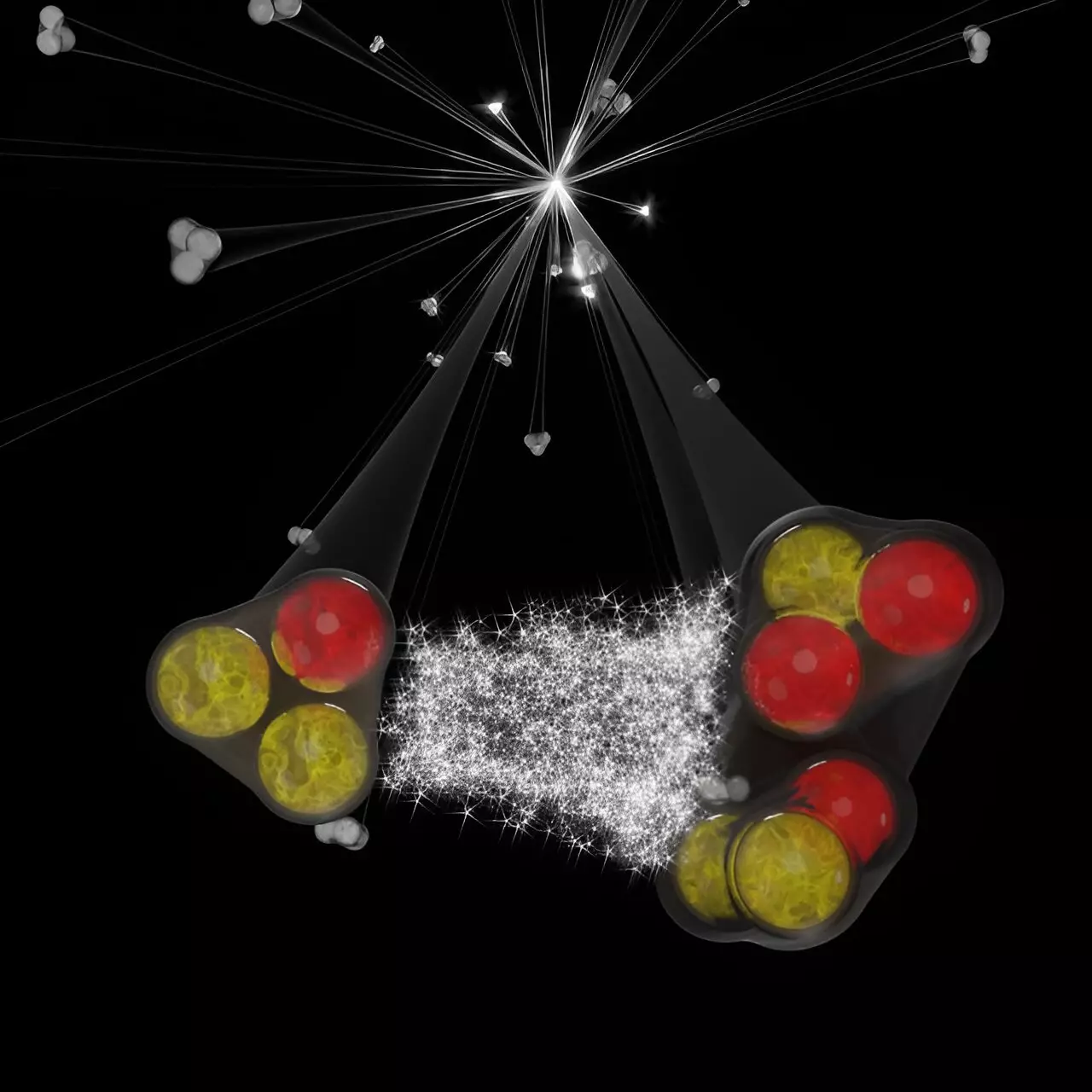Recent research by the ALICE collaboration, published in Physical Review X, sheds light on the complex relationships within three-body nuclear systems, particularly through the examination of kaon-deuteron and proton-deuteron interactions. At the foundation of nuclear physics are fundamental forces, primarily understood as interactions between pairs of particles. When attempting to extend this understanding to more complex systems involving three or more particles, significant challenges emerge. Insights into how these forces operate in three-hadron systems are crucial for uncovering the mysteries surrounding the composition of atomic nuclei, the behavior of dense nuclear matter, and the intricate environments within neutron stars.
Nuclear interactions are inherently complicated, and exploring them through experimentation allows physicists to refine theoretical models. The investigations carried out using proton-proton collisions at the Large Hadron Collider (LHC) serve as an important stepping stone in elucidating the nuanced nature of these forces. By probing these interactions at distances on the order of femtometers—a scale where quantum mechanical effects dominate—researchers can gather valuable data on particle behavior under extreme conditions.
The ALICE collaboration leverages its sophisticated particle identification capabilities to analyze high-multiplicity proton-proton collisions at a center-of-mass energy of 13 TeV. Their approach involves identifying correlations between particle pairs produced in these collisions, particularly focusing on deuterons, kaons, and protons. The core of the analysis is a correlation function that quantifies how the likelihood of encountering two particles with specified momenta deviates from what would be anticipated if their momenta were entirely independent.
The outcome of this study reveals critical insights into the forces at play. According to the correlation function’s results, values above unity signify attractive interactions, whereas values below one indicate repulsive interactions. Notably, the kaon-deuteron and proton-deuteron correlation results indicated an overall repulsive interaction at low relative transverse momenta. This finding alludes to fundamental characteristics of the interactions between these particles, suggesting a complex interplay that defies simple pairing models.
The measurement of distance between proton-deuteron and kaon-deuteron interactions is particularly revealing. Researchers found that these particles are produced at relatively short distances, approximately 2 femtometers apart, a range where strong interaction effects predominate. The correlations observed between kaons and deuterons can be modeled effectively using a two-body approximation that incorporates both strong forces and Coulomb interactions. However, the proton-deuteron pairs exhibited discrepancies that required a more in-depth, three-body analysis, underscoring the limitations of simplistic models in accounting for the intricate forces at play in these interactions.
This level of sensitivity in the correlation functions serves as a groundbreaking technique for investigating three-nucleon dynamics in high-energy environments. By recognizing the strong coupling between particles and their production configurations, physicists can leverage these insights to enhance their understanding of fundamental nuclear interactions.
The implications of the ALICE collaboration’s findings extend beyond the immediate study of kaon-deuteron and proton-deuteron systems. The results set a foundation for expanding research into other hadronic systems that remain experimentally elusive. Plans are underway to apply similar methodologies to data garnered from future LHC runs, such as Runs 3 and 4, which could facilitate investigations into three-baryon systems in the strange and charm sectors.
Overall, the findings serve not only to deepen our comprehension of nuclear forces but also to inspire a more nuanced approach to research in areas that require high-precision measurements. As the field of nuclear physics continues to evolve, the techniques and insights generated by the ALICE collaboration could open new avenues for exploration and discovery, bridging theoretical frameworks with empirical data to unlock the mysteries of our universe.


Leave a Reply